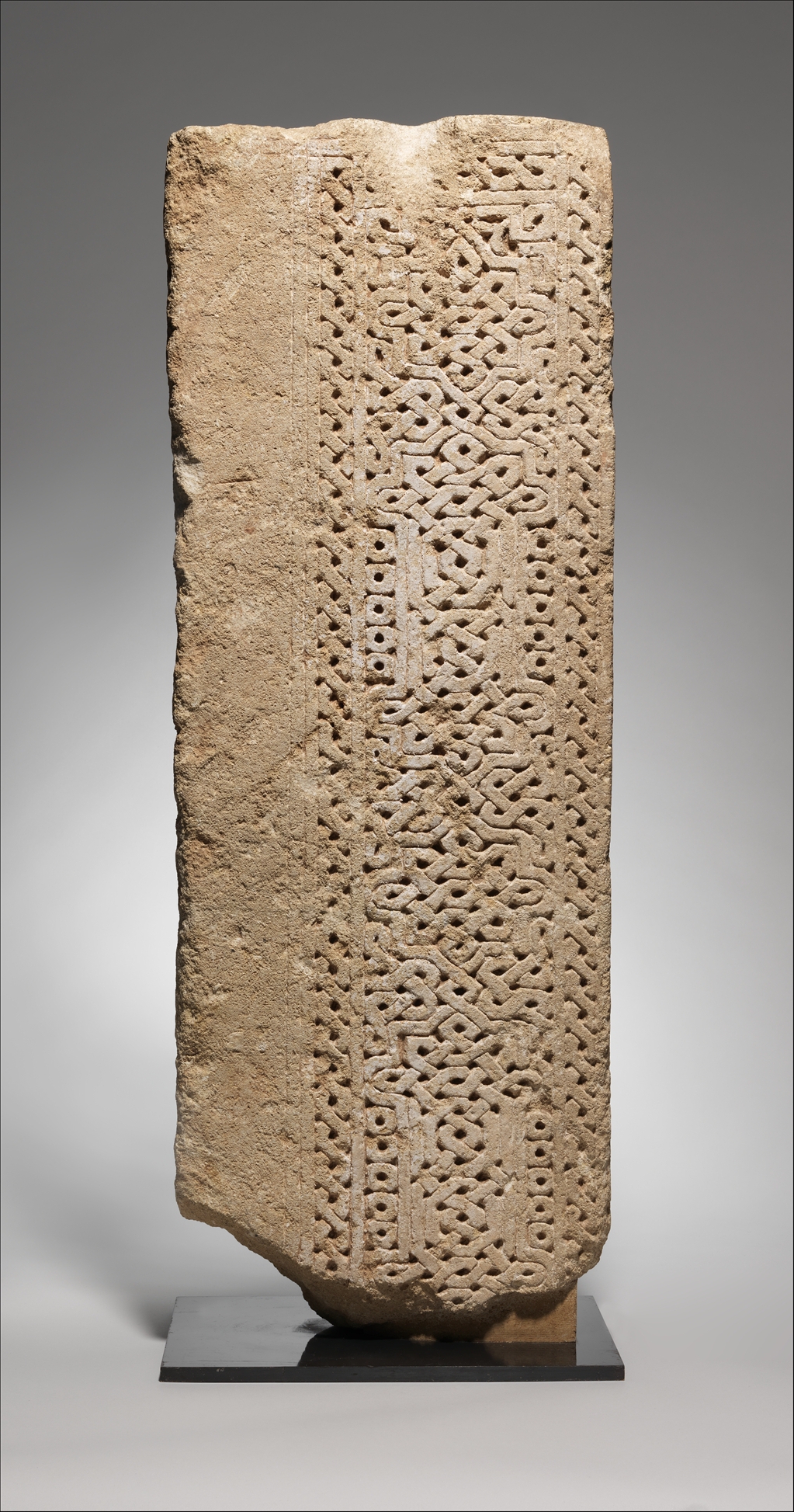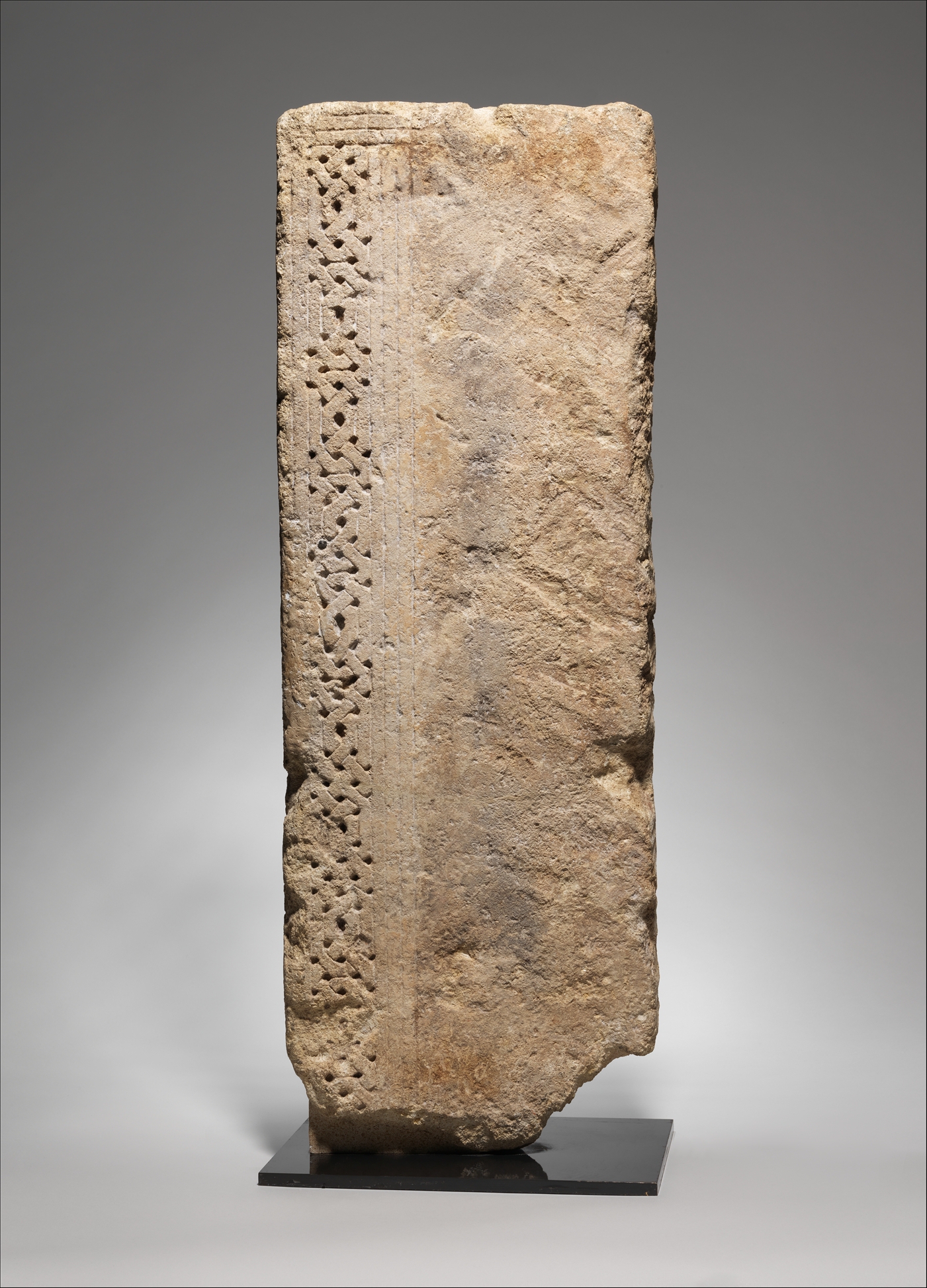Panel with Geometric Pattern and Benedictory Inscriptions
Not on view
This limestone panel exemplifies the style of ornament found on carved surfaces, textiles, and decorative arts in Spain from 1232 to 1492 under the Nasrids, the last of the Muslim dynasties to rule in the Iberian Peninsula. Although fragmentary, the piece retains enough of its original length to reveal the designs. The rectangular panel is carved on three sides. On one of the wide sides is a band of squared interlace; on the other, a tall band of repeating eight-pointed stars and cartouches, both enclosing a knot pattern, with a guilloche border. The Kufic inscription on the adjacent narrow edge repeats the Arabic word al-‘afiyya (good health). Several fourteenth-century tombstones in the Museo de la Alhambra in Granada have similar geometric ornament, but their inscriptions are rendered in a rounded script called Naskh. The ornate facades of the Alhambra Palace, on the other hand, include Arabic inscriptions in both cursive Naskh and squared Kufic script, as well as highly complex geometric ornament. This panel may have been part of the frame of a doorway. Based on the direction of the inscription, it could also have functioned as a windowsill.
Due to rights restrictions, this image cannot be enlarged, viewed at full screen, or downloaded.
This artwork is meant to be viewed from right to left. Scroll left to view more.




